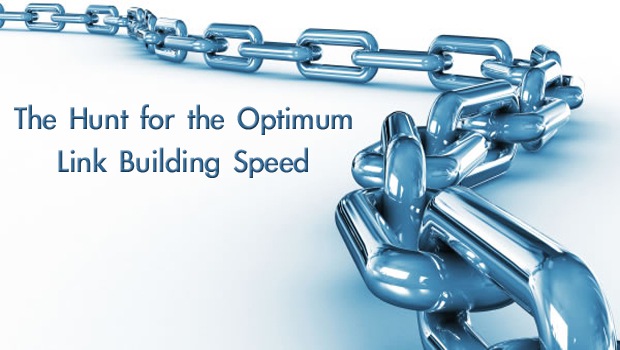
Not that many people were very concerned with link juice or the velocity at which new links are built five years ago, but today Search Engine Optimization (SEO) is a priority for CEOs and marketing teams on every continent.
For some SEO is a way of life and they live by the updates. These experts have an intimate understanding of the algorithms that dictate the search ranking pages and are prone to fluctuate. They know that SEO is far from a list of set rules, but rather something that grows and changes to reflect the patterns and habits of the users.
However, for many, SEO is a nebulous chore – and often one that is full of surprises. Strategies can quickly go from silver bullet to illegitimate and clean up efforts are often tedious and confusing. Most webmasters have tons of questions about SEO.
One of the most basic but popular, at least in my own experience, has been: what is optimum link velocity?
A Magic Number And Prime Velocity
The question itself is understandable consider there are hundreds of link building options available and some of them offer hundreds of links in a matter of hours. That, of course, is a practice long denigrated in the marketing community. However, other options exist – for example, a viral infographic – that can help sites build hundreds of inbound links in a matter of days.
Unfortunately, there is no precise formula for link velocity – the sweet spot is something that takes a little common sense to find.
There are some basic tenants to keep in mind when considering link velocity. The most important is whether or not the links are natural, or outside of the possibilities for link building when normal promotional techniques are used. Additionally, it is a good idea to avoid sharp spikes in link building. Google bots will most definitely recognize there is an inconsistency present if a site acquires six links in six months, and then 250 links over the course of a weekend. Finally, be sure any spikes in link building are additions or improvements to content; otherwise the spike may be a red flag.
Something else every webmaster should keep in mind is whether or not the links make sense. Inbound links should be coming from pages with some sort of relevancy to the content and ideally from unique, high authority domains.
What Google wants…
…is high quality content. And those capable of creating it should never let fears about link velocity stand in their way.
The “avoiding abnormal spikes” maxim for link building has one, glaring exception: viral content. Google seems to have no qualms allowing viral events to launch a website to a #1 ranking. In fact, Google doesn’t frown upon successes or failures – it only frowns upon frauds. This is a confusing and difficult reality to swallow for anyone who has spent time in the human world, a world where corners can be cut, loyalties can be purchased, and success is laudable in-and-of-itself. Who cares for means when means make ends… right?
Not in Google’s World
It’s not a matter of ethics or moral superiority on the part of Google’s entire army of engineers, founders, and employees that ensures quality control will always show up on a list of their priorities–it’s simply good business on their part. Ensuring that any Joe-Schmoe can’t muck their way up the search results ensures customer satisfaction, and that means Google will continue to remain synonymous with “search” long after the other engines have been forgotten.
In order to stay on the cutting-edge of content and within the parameters of “natural” link building, it is likely the average business will have to hire a link building company. Businesses in this position should always be sure to check the quality of any content produced on its behalf. Google isn’t likely to be very sympathetic to the “I didn’t make that” excuse – your site has a stake in every page with a link pointed towards it.
Google’s Consistent Bottom Line
The moral of this story is simple. Links exist to build a more efficient network of information, and any amount of links can be too many or too few depending on how natural the creation of those links is determined to be. Creating quality content with careful design and offering services that are useful to the public, these are the only ways to ensure that they amount of links you’ve created are equal to the amount of links you’ve earned.




